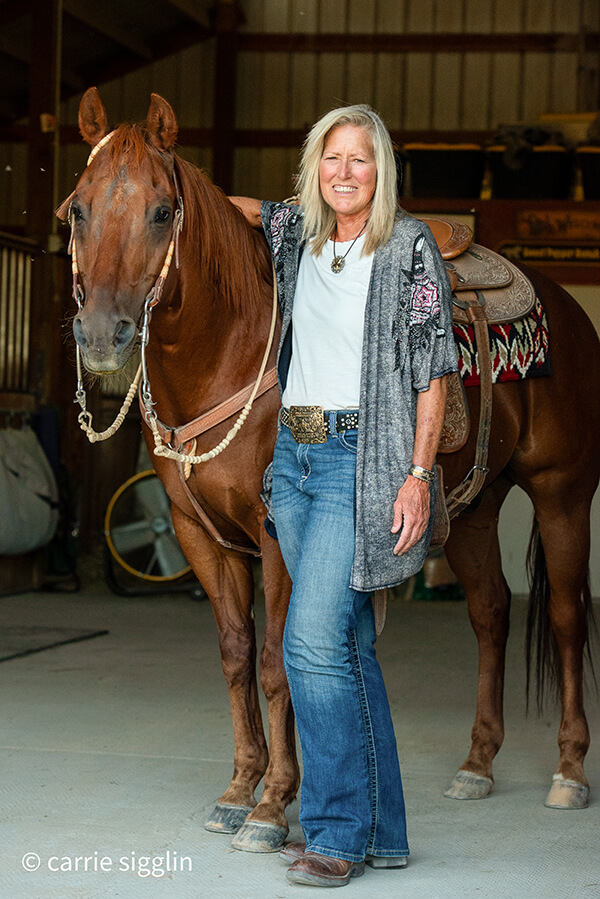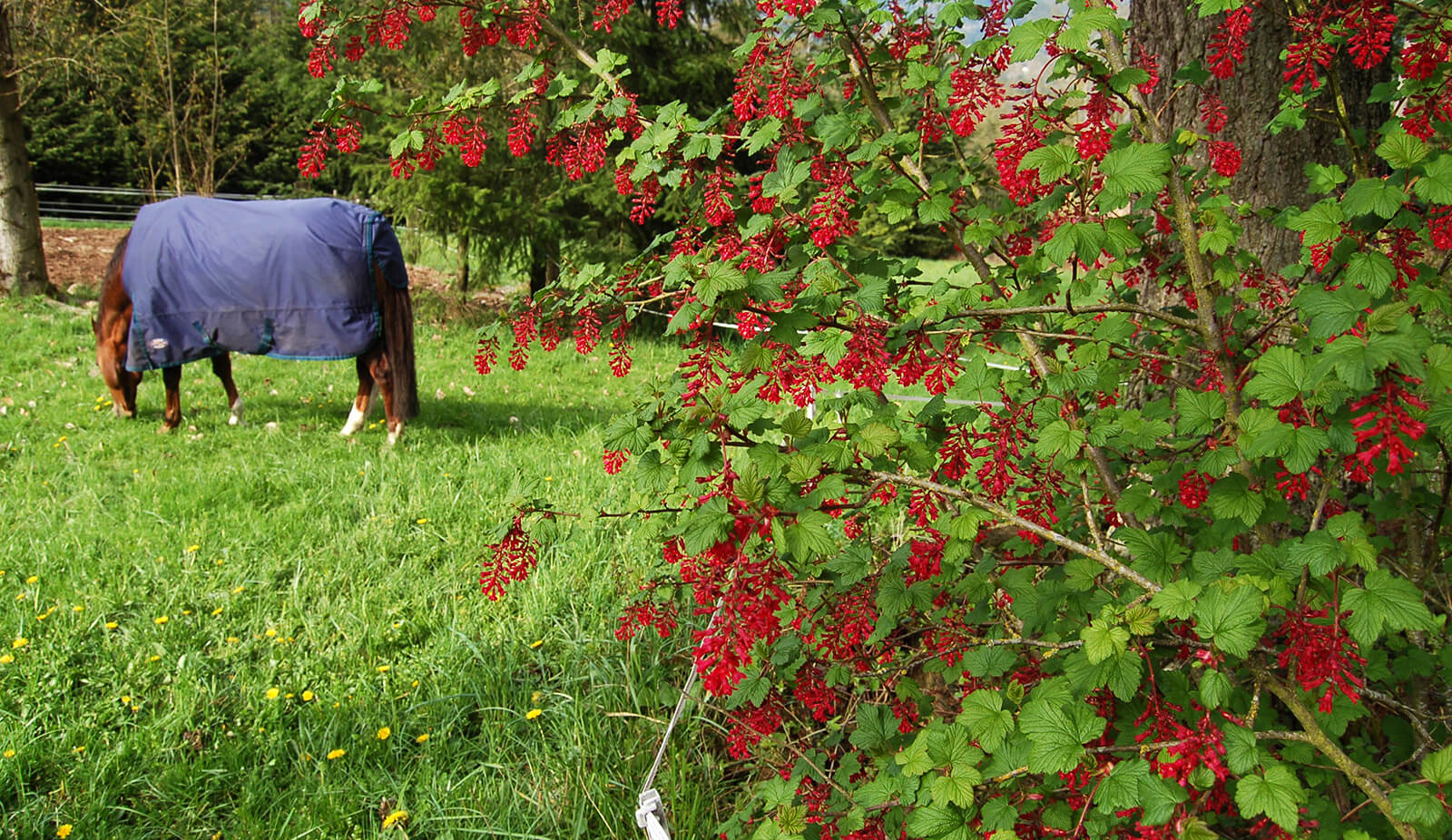Fall in the Pacific Northwest (before the ground freezes) is an ideal time to plant all kinds of things— cool-season veggies, pasture grasses, perennials and both evergreen and deciduous trees and shrubs. Of all these, native plants can be of particular importance on a horse property.
Humans, horses, wildlife, and the ecosystem all benefit from a landscape of native plants. Native plants are those that have evolved over thousands of years in a particular region. They’ve adapted to the geography, hydrology, and climate of a specific region, co-evolving with animals, insects, fungi, and microbes. These plants are the foundation of our natural systems. As a result, a community of native plants provides habitat for a variety of native wildlife species, from the songbirds and butterflies we enjoy to ones we depend on for pest control, like barn owls and swallows.
Logging, farming, ranching, and development have led to a tremendous loss of native vegetation and resulting loss of critical wildlife habitat. Enhancing our horse properties with native plants not only promotes native animals and insects, it can also help control erosion, provide a visual buffer, offer a windscreen, or filter out chemicals and nutrients. In short, native plants are always working for you!
The ideal period for fall planting is roughly six weeks before the first hard frost. In some northern areas of the country the ideal planting period might even be late summer. In general, the window of opportunity for most of the Pacific Northwest is mid-September to early November.
Why is fall planting so good for plants? In the fall, the warm soil encourages root growth. Roots continue to grow through the winter until the ground freezes. In the mild winters typical for the Pacific Northwest, roots continue to grow throughout the winter. Rapid root growth along with top growth returns in early spring for fall-planted plants. The same plant planted in spring will have a considerably slower start due to cool soils.
When summer finally arrives, the fall-planted plants are better equipped to deal with heat and drought due to their well-established root system. There are other good reasons to plant in the fall, such as dependable rainfall, cool weather, and fewer pests and disease problems. In addition, many plants are on sale at nurseries then, which makes fall planting particularly attractive.
Here’s a list of the ways native plants can enhance your horse property:
- Plant native plants as mud managers alongside paddocks and confinement areas to help reduce flows, absorb runoff, and filter out sediments and pollutants. Species to consider for wet areas: red osier or yellow twig dogwood, Pacific willow, black twinberry, salmonberry, and Pacific ninebark.
- Plant hedgerows of native plants as an alternative to or along with fencing. Hedgerows can act as wind breaks, dust barriers (such as alongside an arena), or to provide an attractive visual boundary between neighboring uses. Species to consider for hedgerows: beaked hazelnut, Nootka rose, red flowering or golden currant as well as coniferous and deciduous trees such as Douglas fir, western red cedar, black hawthorn, and Pacific crabapple.
- Plant native buffers along irrigation ditches, streams, and wetlands to protect riparian habitat by improving water quality and reducing erosion. Species to consider for riparian areas: western red cedar, Oregon ash, black twinberry, Pacific ninebark, and salmonberry.
- Plant native plants instead of lawns to save time and money by reducing or even eliminating the need for fertilizers, pesticides, water, and lawn maintenance equipment. Species to consider for drier areas: Douglas fir, shore pine, Nootka rose, big leaf maple, beaked hazelnut, thimbleberry, snowberry, and Oregon grape.
- Plant native plants as decorative landscape features near your house, barn, or along the driveway. Many native shrubs and groundcovers exhibit beautiful arrays of colors in flowers and leaves. Choose a variety of evergreen and deciduous plants for year round coverage. Species to consider for ornamental value: red flowering currant, syringa or mock orange, salal, sword fern, and kinnikinnick.
For help on selecting native plants suited for your specific climate, soil type, location, and needs contact your local conservation district, extension office, or native plant society. Or check with your local nursery—they often have a supply of natives and are happy to work with you.
Note: December is when many Pacific Northwest conservation districts begin taking orders for their annual tree sales. Pick up is usually sometime in March. These sales consist of bare root seedlings of native trees and shrubs at affordable prices. Contact your local conservation district for more information.
Check out the Horses for Clean Water website for information on upcoming events, online classes, private consultations, tip sheets, and other resources for horse keeping and land management. Visit the Sweet Pepper Ranch website for info on upcoming clinics and retreats.
See this article in the December 2021 online edition:

Alayne Blickle began in the 1990’s as a pioneer in water conservation and natural resources conservation by creating the entrepreneurial consulting business, Horses for Clean Water, an award-winning internationally acclaimed education program that looks for horse-healthy, nature-based solutions to land management challenges. She continues this work today partnering with agencies, organizations, and horse owners throughout North America and worldwide. She is a regularly contributing writer and photojournalist to several equine publications.
Alayne lives with her horse trainer husband, Matt Livengood, in southwestern Idaho where they raise and train AQHA horses and mustangs on their eco-friendly horse ranch. Contact her through the Horses for Clean Water website or through their ranch website Sweet Pepper Ranch.
For more information contact Alayne at [email protected] or 206-909-0225.






